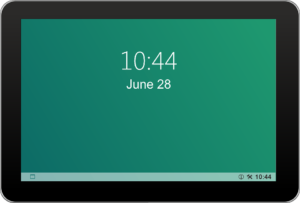
Projected capacitive is one of the world’s leading touchscreen technologies. It’s a variant of capacitive touchscreen technology. Like all capacitive touchscreens, projected capacitive touchscreens identify touch commands by measuring a uniform electrostatic field. While you may have heard of projected capacitive touchscreens, though, there are several myths about them you should ignore.
#1) Only Feature a Single Electrode Layer
Not all projected capacitive touchscreens feature a single electrode layer. Some of them have two electrode layers. An electrode layer is a thin layer that features etched electrodes. All projected capacitive touchscreens feature a grid of etched electrodes. While some of them have this grid of electrodes on a single layer, others leverage two separate layers. They feature a layer with rows of electrodes and another layer of columns of electrodes.
#2) Doesn’t Work With Gloves
You might be surprised to learn that projected capacitive touchscreens can work with thin gloves. You don’t have to use a bare finger to control them. Assuming you are wearing thin gloves, such as surgical gloves, you can control them with a gloved finger. Surface capacitive touchscreens, conversely, won’t work with gloves. Surface capacitive touchscreens will typically only work with a bare finger.
#3) Use the Same Underlying Technology
Don’t assume that all projected touchscreens use the same underlying technology. There are two different types of projected capacitive touchscreens: self and mutual. Mutual projected capacitive touchscreens involve the application of a voltage to the rows or columns. Self projected capacitive touchscreens use a similar method to detect touch commands, but they are designed so that the rows and columns function independently.
#4) Limited to Mobile Devices
Projected touchscreens aren’t limited to mobile devices. While many smartphones, tablets, smartwatches and other touchscreens use them, projected capacitive touchscreens have many other applications. They are commonly used for point-of-sale (POS) systems, for example. POS systems are touchscreens that allow businesses to accept and process money from their customers. Many POS systems use a projected capacitive touchscreen.
#5) Can Only Register a Single Point of Contact at Any Given Time
Another common myth about projected capacitive touchscreens is that they can only register a single point of contact at any given time. Projected capacitive, however, is one of the few touchscreen technologies that supports multiple points of contact. You can pinch the display interface, for instance, to perform zooming commands. Pinching in or out will zoom in or zoom out of the display. Known as multitouch, it’s a common feature of projected capacitive touchscreens.
